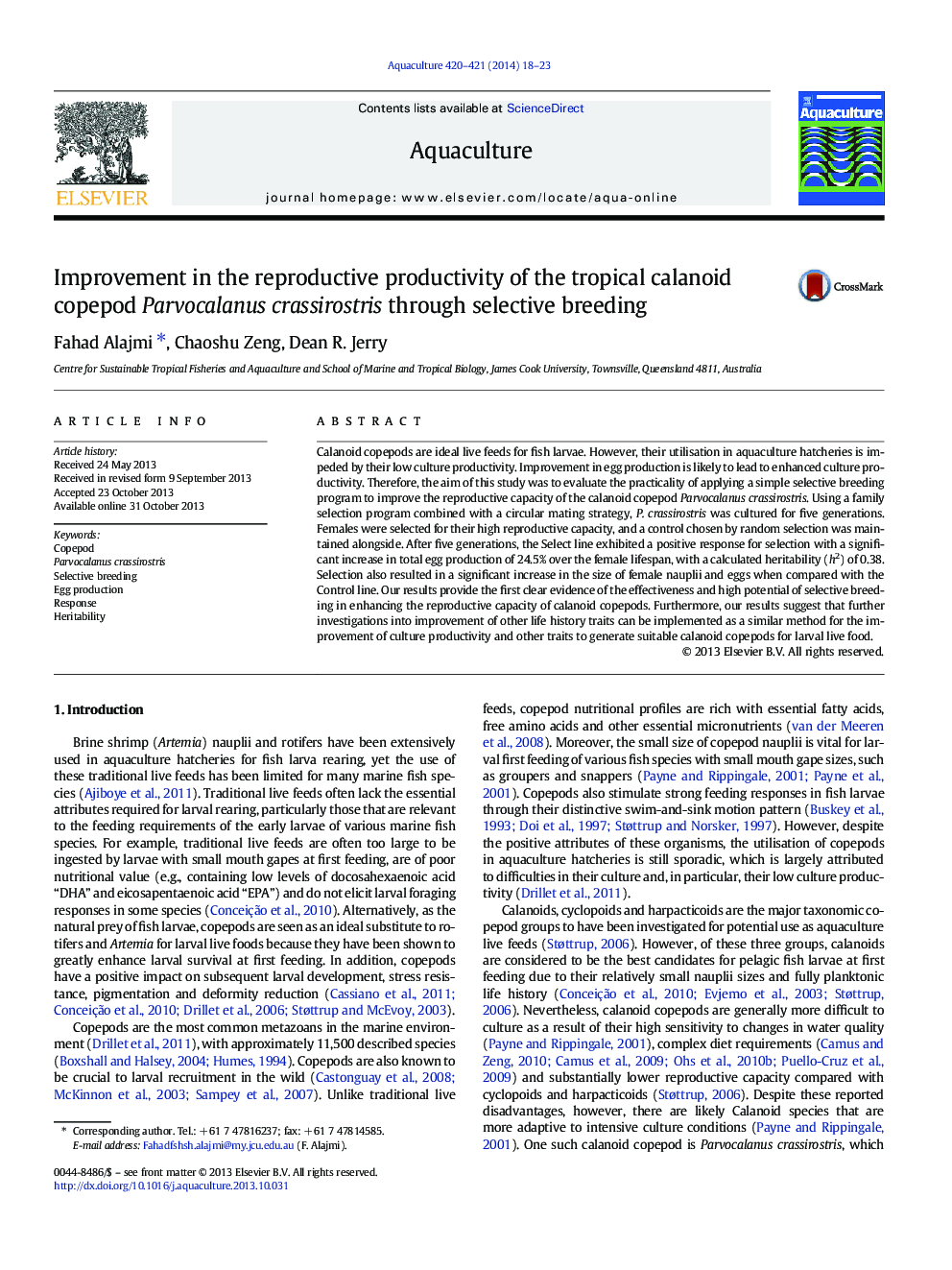| Article ID | Journal | Published Year | Pages | File Type |
|---|---|---|---|---|
| 2421978 | Aquaculture | 2014 | 6 Pages |
•Selective breeding significantly improved the reproductive capacity of Parvocalanus crassirostris.•After five generations, total egg production increased by 24.5% compared with the base population.•Other traits, including egg, nauplii and female size, were also significantly enhanced.
Calanoid copepods are ideal live feeds for fish larvae. However, their utilisation in aquaculture hatcheries is impeded by their low culture productivity. Improvement in egg production is likely to lead to enhanced culture productivity. Therefore, the aim of this study was to evaluate the practicality of applying a simple selective breeding program to improve the reproductive capacity of the calanoid copepod Parvocalanus crassirostris. Using a family selection program combined with a circular mating strategy, P. crassirostris was cultured for five generations. Females were selected for their high reproductive capacity, and a control chosen by random selection was maintained alongside. After five generations, the Select line exhibited a positive response for selection with a significant increase in total egg production of 24.5% over the female lifespan, with a calculated heritability (h2) of 0.38. Selection also resulted in a significant increase in the size of female nauplii and eggs when compared with the Control line. Our results provide the first clear evidence of the effectiveness and high potential of selective breeding in enhancing the reproductive capacity of calanoid copepods. Furthermore, our results suggest that further investigations into improvement of other life history traits can be implemented as a similar method for the improvement of culture productivity and other traits to generate suitable calanoid copepods for larval live food.
